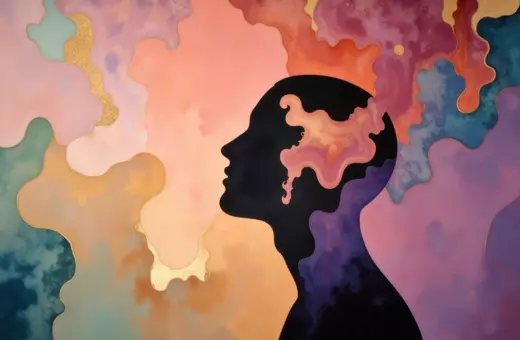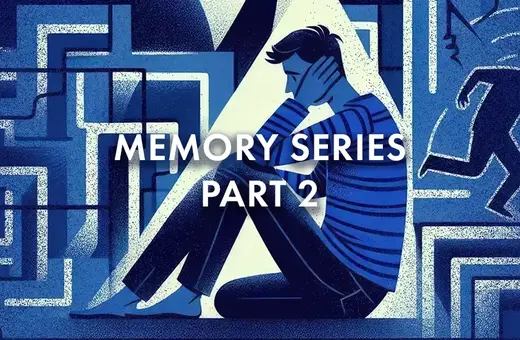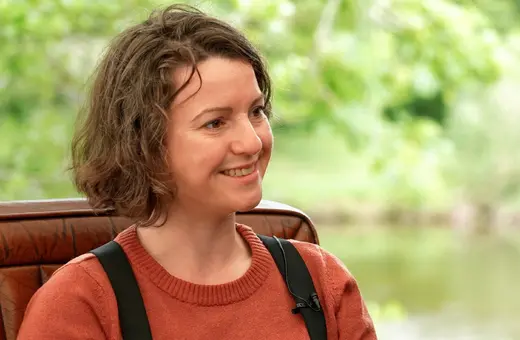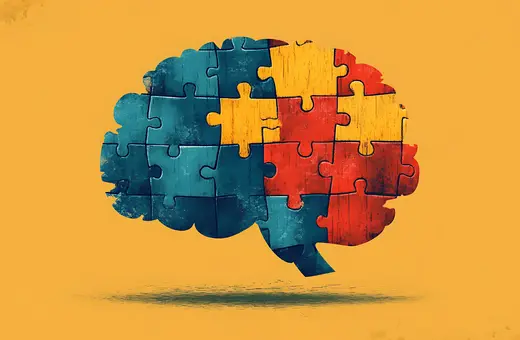Mental health is almost always spoken about from a starting point of mental illness. We know all about what bad mental health is. But what does good mental health look like? From Maslow’s self-actualization to Rollo May’s The Meaning of Anxiety, we can explore the possibilities of psychological well-being and discover that meaning and calm through psychological storms is the key to positive mental health, writes Paul G. Mattiuzzi
While I was in graduate school in the late 1970’s, a short-lived, student-run newsletter published under the banner: Freedom From Disabling Anxiety Press – a play on the common “Free Press” moniker.
We were training to diagnose the human condition in terms of a nosology founded on a medical model that defined “mental health” as the absence of psychiatric illness. The term “mental health” refers to disorder, disease and infirmity, and not actual health or well-being. Positive psychological health is referenced in the DSM (Diagnostic and Statistical Manual) only by way of a code number for “no diagnosis.”
As students of psychology (not psychiatry), we were also aware that “mental health” is a misnomer for another reason. Adaptive human functioning involves more than just thoughts and cognitions, our mental life. To identify both the healthy and the troubled souls among us, it is more accurate to refer to mental, emotional, behavioral, social and bio-psychological health.
The term psychological health includes all of the above, and it enables a discussion about what people who fall on the positive end of that axis actually look like.
Adaptive human functioning involves more than just thoughts and cognitions, our mental life.
In the 1960’s, the idea that people should expect something more from life than just freedom from disabling anxiety gave rise to the Human Potential Movement – a popular counterculture face for a series of emerging existential, humanistic, Jungian, Gestalt and self-psychology theories. The academic-intellectual face for the movement was provided by psychologist Abraham Maslow, whose seminal text Toward a Psychology of Being was published in 1968, edited from lectures dating back to 1954.
At the mid-century, there were two central currents in psychology. The Freudian-analytic enterprise, broadly defined, was focused on the dynamics of psychopathology. The Behaviorists were intent on explaining human motivation and action as analogous to a “black box” with stimulus inputs and response outputs. Maslow argued that a “Third Force” was coalescing around the idea that individual consciousness is essential to the human experience and that psychology must consider “both the depths and the heights of human nature.”
In the deterministic Freudian and behavioral models, personality is created from a combination of instinct (nature) and influence (nurture or reinforcement). Maslow accepted that people have a given “inner nature” that becomes shaped by experience, but he added that because life involves a continual series of choices, the self is largely “a creation of the person himself … a ‘real’ person is his own main determinant.”
In Maslow’s construction, the most important shaping of a healthy personality comes from the gratification or satisfaction of innate needs and impulses, among which he includes an instinctual drive for growth, individuation and ultimately, self-actualization. In hierarchical fashion, a person must first meet their survival, safety and security needs, and the need for love, belongingness, self-esteem, dignity and self-respect, before reaching the higher stages of personal growth.
Missing from the equation was the fact that in ordinary life, there is no freedom from fear and anxiety or any escape from stress. Anxiety is a consequence of sentience and stress is ubiquitous.





















Join the conversation